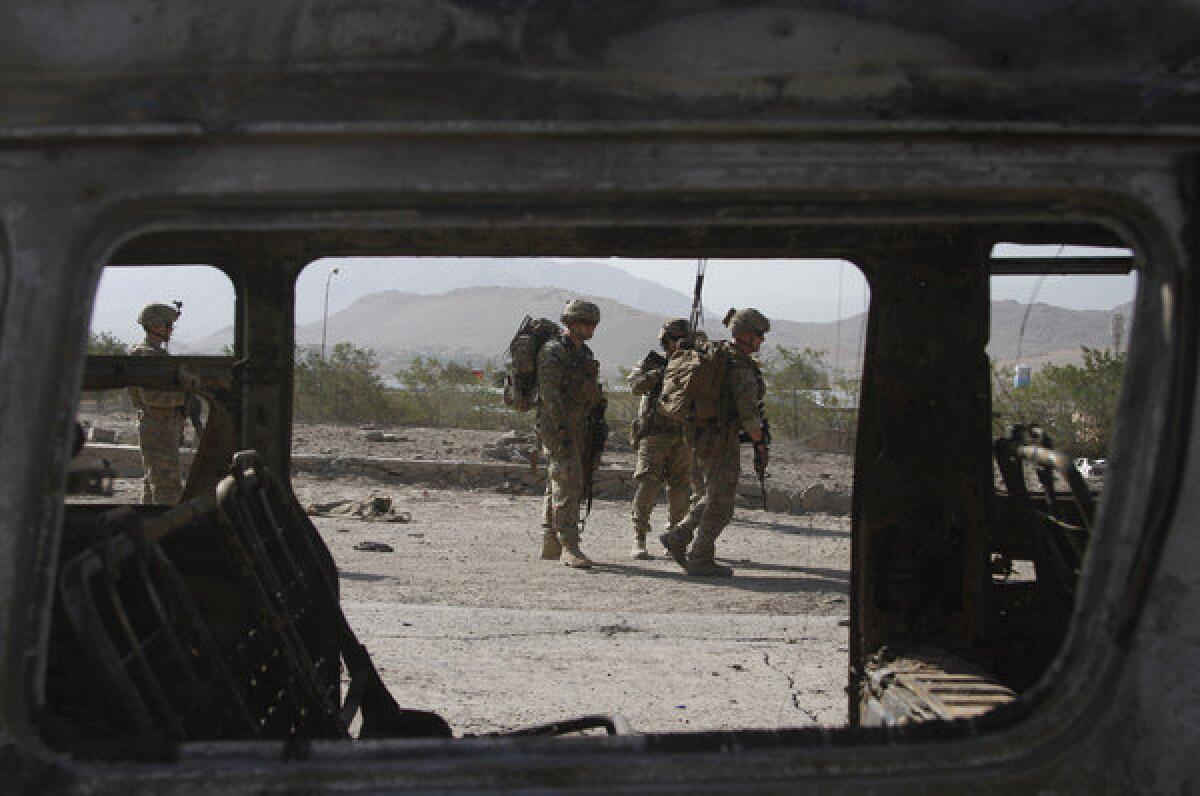NATO disputes claim of 11 civilian deaths in Afghan strike

KABUL, Afghanistan -- Afghan officials said Sunday that a NATO air strike in the eastern part of the country killed 16 people, including 11 civilians, a version countered by the international coalition, which said in a statement its attack killed 10 militants with no reported civilian casualties.
Civilian deaths and injuries at the hands of foreign troops remain a highly sensitive political issue in Afghanistan. President Hamid Karzai in February banned Afghan security forces from calling in air strikes in residential areas after 10 civilians were allegedly killed in a NATO night attack in Kunar.
Shujaul Mulk Jalala, the governor for eastern Kunar province, said the strike late Saturday night in Kunarâs Wattapu district killed four women, four children and three men who were riding with five militants in a pickup truck between villages, killing 16 in total. Pickup trucks often serve as public transportation in remote mountainous areas of Afghanistan.
The five militants are believed to be affiliated with Al Qaeda, Jalala said.
Some reports suggested the deaths may have resulted from a drone attack, but this was not confirmed. Conflicting accounts of who, by what means and how many died are not uncommon given remote conditions and a lack of independent observers, especially in the Kunar region bordering Pakistan.
Security analysts say the U.S.-led air strikes are a double-edged sword. On the one hand, they are often effective, especially in remote border and tribal areas, killing many Al Qaeda leaders. But they also kill many ordinary Afghan people, in part because the militants hide among the civilian population and in part because targeting, even as it improves, is never perfect.
Foreign combat troops are scheduled to withdraw from Afghanistan by the end of 2014, placing growing responsibility for national security in the hands of local forces, who often suffer from poor morale, training, equipment and high desertion rates.
Ideally, Afghan ground forces with the help of an indigenous Afghan air force could defend the country without U.S. air support, said Ahmad Sayedi, a Kabul-based military analyst, although thatâs unlikely to happen anytime soon.
âWe need our own air force,â Sayedi said. âThe ground forces are not capable of operating without air support.â
Kunar province has seen intense fighting between the Taliban and American-led NATO and Afghan forces for much of the last 10 years. According to a recent United Nations report, some 1,300 Afghan civilians were killed and more than 2,500 wounded in the first half of 2013, most from insurgent attacks, a 23% increase over the same period of 2012.
In a statement, NATO said it took all allegations of civilian deaths and injuries seriously and would continue to look into reports that civilian casualties resulted from its âprecision strike.â
In a separate incident in eastern Wardak province Sunday afternoon, suicide bombers stormed the provincial headquarters of the National Directorate of Security spy agency, killing four intelligence officers and wounding more than 30 others, including women and children, officials said.
The Wardak attack started when a suicide car bomber detonated his explosives-packed vehicle at the gate of the National Directorate of Security offices in Maidan Shahr, the provincial capital, at which point five attackers with suicide vests tried to enter the premises, said Attaullah Khogyani, the governorâs spokesman. He said they faced strong resistance from Afghan security forces.
A gun battle raged between the militants and security forces for more than two hours before the attackers were killed, Khogyani said.
In a statement sent to journalists, the Taliban claimed responsibility for the Wardak attack and said it had killed 10 âenemy forcesâ and destroyed more than 30 tanks. It isnât unusual for the Taliban to exaggerate its claims or even take credit for incidents it didnât plan.
The Taliban has often targeted the National Directorate of Security. In late 2012, a Taliban suicide bomber seriously injured the then-NDS chief, Asadullah Khalid, during a meeting arranged on the pretext of providing intelligence. Khalid remains hospitalized after undergoing surgery several times. The directorate reportedly has some 30 departments employing 15,000 to 30,000 people nationwide, many trained by the U.S. and NATO.
ALSO:
Israeli leader skeptical about Iranian Twitter greetings
Excitement rocks Tokyo upon selection as 2020 Olympics site
EU: Strong evidence Syria used chemical weapons, says U.N. should act
Special correspondent Baktash reported from Kabul and Magnier reported from New Delhi.
More to Read
Sign up for Essential California
The most important California stories and recommendations in your inbox every morning.
You may occasionally receive promotional content from the Los Angeles Times.










